About ten years ago, I picked up a young dwarf wisteria made from air layer by Boon Manakitivipart. Boon had grown the parent tree for some time before it bloomed, and when it did, he started several layers. The tree below is one of those layers.
Dwarf wisteria – 2009
To offer an idea of how quickly the species grows, here’s a photo from spring of 2017.
May, 2017 – pot by Victoria Chamberlain
After cutback
Just a year later, the tree looked exactly the same as it did a year before.
May, 2018
Here’s a better view of the branches without leaves.
December, 2018
After cutback – 13″
The tree has yet to bloom for me, but I’ve found it to be a fun species to have in the garden as the leaves have a unique texture.
What is the actual species? That’s a question to which I have yet to find a satisfying answer. A number of nurseries offer plants with the name Wisteria sinensis ‘Kofuji.’ I’ve also seen similar plants with the name Millettia japonica or sometimes Millettia japonica ‘Hime fuji.’
Both Wisteria sinensis (“Chinese wisteria”) and Millettia japonica (“Japanese millettia”) are listed as independent taxons, that is, independent types of plants. They are related as both are in the tribe (one rank higher than genus) Millettieae, a member of the bean family. Here’s where I found some interesting connections between the species.
A synonym for Millettia japonica is Wisteria japonica (“Japanese wisteria”). A synonym for Wisteria sinensis is Millettia sinensis. Given these synonyms, millettia and wisteria are interchangeable, but the distinction is preserved between the Japanese and Chinese species.
These synonyms highlight similarities between wisteria and millettia, but they don’t help with identifying the dwarf cultivar or cultivars. The suggested cultivar names don’t help much either. ‘Kofuji’ is Japanese for small wisteria, making Wisteria sinensis ‘Kofuji’ translate to “Chinese wisteria, small Japanese wisteria.” Likewise for ‘Hime fuji’ which also means small wisteria in Japanese.
If any budding – or professional – taxonomists can shed some light on whether or not there are one or two dwarf “wisterias,” feel free to let us know in the comments and cite any relevant sources.
In my recent research, I found many references to how good the vine is for development as bonsai. I agree, but have been surprised that I’ve seen so few developed specimens over the years. If you know of some beauties, please share!
Workshop Dates Set for 2019
If you’re interested in attending workshops next year, check the Workshop page to learn more and sign up online.
Subscribe to Bonsai Tonight
New Posts Delivered Every Tuesday and Friday

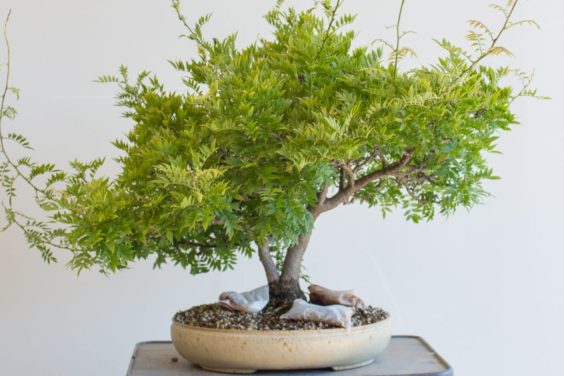
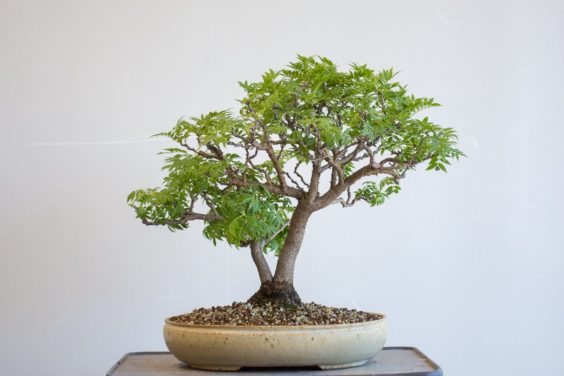
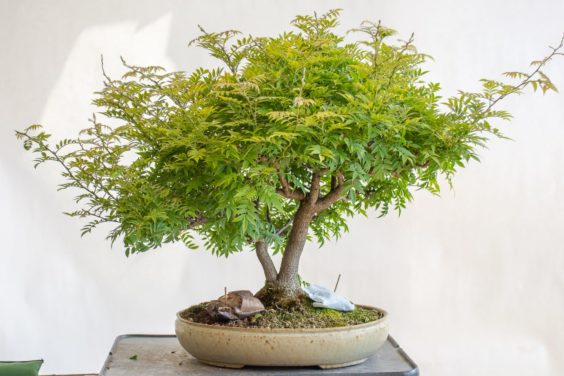
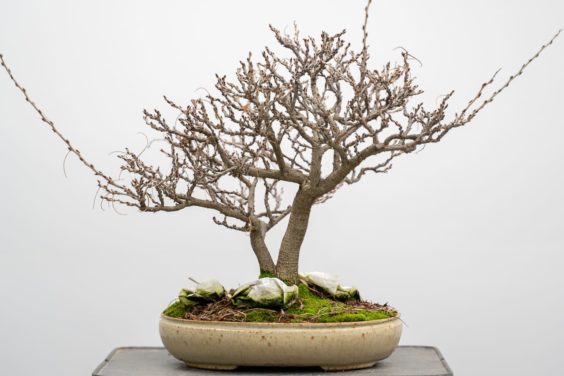
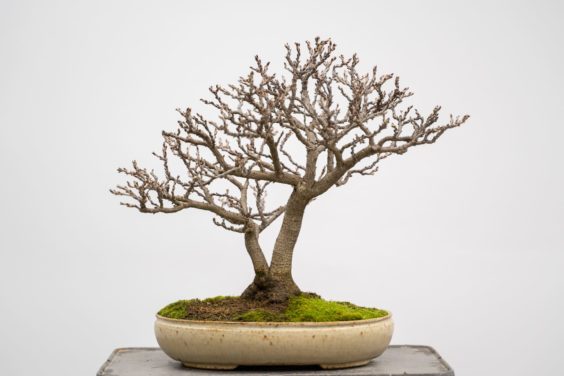
Alain K. says
Here, it is known as “glycine d’été” – summer Wisteria, but the scientific name seems to be Milletia japonica. Though not very common, it can be ordered online from various sources in France. It is said to be a vine, with semi-persistyent foliage.
More details (in French)on this page from a professional:
https://www.jardindupicvert.com/plantes-grimpantes/16689-glycine-d-ete.html
Jonas Dupuich says
Thanks, Alain! I think you’re right about the tree being Millettia Japonica. The leaves of the Satsuma look like they have rounder tips and deeper burgandy flowers, but I’ll have to get mine to bloom for that to help with the ID.
Tony Saraceno says
Jonas
are these the flowers on the parent of your plant?
Jonas Dupuich says
Hi Tony! It looks like the parent is Millettia japonica ‘Microphylla’ which has a slightly different flower. Will say more in the next post.
Tony Saraceno says
OK…look forward to the next post….
and as usual there is lots of confusion on names as well…. as you can see in these two url:
https://plantlust.com/search/#/genus=Millettia
and
https://www.iselinursery.com/companion-plants/millettia-japonica-hime-fuji/
Had purchased one when lived in Houston and was great plant…flowered every summer….something went wrong after a couple years living here and it died.. Definitely looking for another one…. Thanks
Wayne says
The fact that you don’t mention it makes me question the fact that I read a long time ago that Chinese Wisteria’s tendrils seem to coil in the opposite direction that Japanese Wisteria’s tendrils coil. I don’t remember which is which. Is that a gardening myth?
(A quick internet search shows some mention of this fact.)
Jonas Dupuich says
I don’t know that I’ve heard that before – am not sure if there’s anything to it or not. It would surprise me if that’s the case, but it would be fun to learn one way or the other.